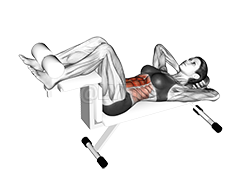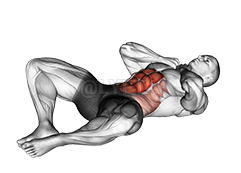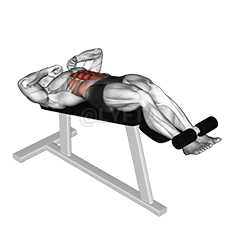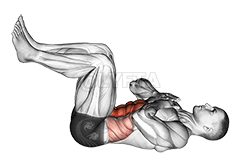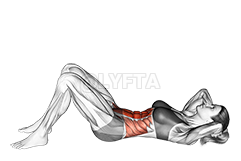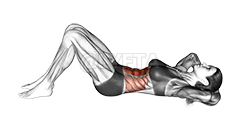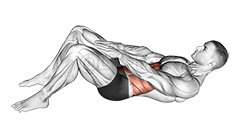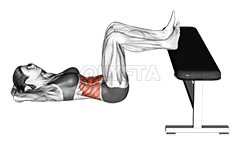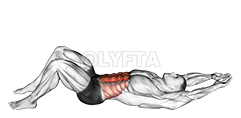
Reverse Crunch
Exercise Profile
Related Exercises:
Introduction to the Reverse Crunch
The Reverse Crunch is a core-strengthening exercise that primarily targets the rectus abdominis and obliques, enhancing abdominal strength and stability. It's an excellent workout for individuals of all fitness levels, from beginners to advanced, who are looking to develop their core strength and improve overall balance. Incorporating Reverse Crunches into a workout routine can contribute to better posture, improved athletic performance, and reduced risk of back pain.
Performing the: A Step-by-Step Tutorial Reverse Crunch
- Bend your knees at a 90-degree angle and lift your feet off the ground, so your thighs are perpendicular to the floor.
- Engage your abs and lift your hips off the floor, bringing your knees towards your chest.
- Hold this position for a moment, then slowly lower your hips back down to the starting position.
- Repeat these steps for the desired number of repetitions.
Tips for Performing Reverse Crunch
- Avoid Straining Your Neck: Another common mistake is straining your neck by tucking your chin into your chest. To avoid this, keep your neck relaxed and gaze upwards throughout the exercise. Your focus should be on engaging your abs, not on what's happening with your neck or head.
- Use Your Abs, Not Your Hands: Some people have a tendency to push down with their hands to help lift their hips off the floor. This not only reduces the effectiveness of the exercise but
Reverse Crunch FAQs
Can beginners do the Reverse Crunch?
Yes, beginners can do the Reverse Crunch exercise. It's an effective exercise for targeting the lower abdominal muscles. However, it's important to start slow and focus on maintaining proper form to avoid injury. It might be challenging at first, but with regular practice, it will become easier. As always, if there's any discomfort or pain while doing the exercise, it's recommended to stop and consult a fitness professional or a doctor.
What are common variations of the Reverse Crunch?
- In the Sliding Disc Reverse Crunch, you use sliding discs under your feet to add a sliding motion, increasing the intensity of the workout.
- The Weighted Reverse Crunch involves holding a dumbbell or weight plate between your feet while performing the exercise to add resistance.
- The Hanging Reverse Crunch is a more advanced variation where you hang from a pull-up bar and lift your knees towards your chest.
- The Bench Reverse Crunch involves lying on a bench instead of the floor, providing a greater range of motion and increased difficulty.
What are good complementing exercises for the Reverse Crunch?
- Bicycle Crunches further enhance the benefits of Reverse Crunches by adding a rotational element, which helps to engage the obliques more intensively, thereby improving overall core strength and balance.
- Leg raises, like Reverse Crunches, focus on the lower abdominal muscles, but they also engage the hip flexors, providing a more comprehensive workout for the entire core region.
Related keywords for Reverse Crunch
- Bodyweight exercise for waist
- Reverse Crunch workout
- Waist toning exercises
- Bodyweight waist workout
- Reverse Crunch routine
- Waist strengthening exercises
- Bodyweight Reverse Crunch
- Waist-targeted workouts
- Reverse Crunch for waist toning
- Bodyweight exercises for a slimmer waist.
